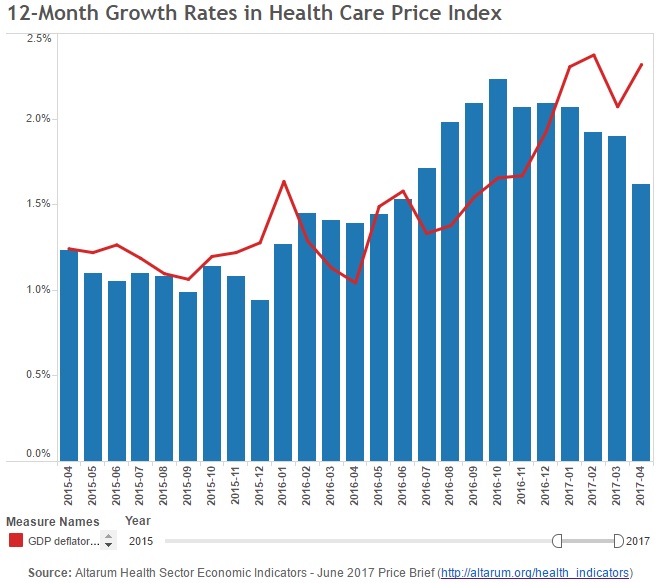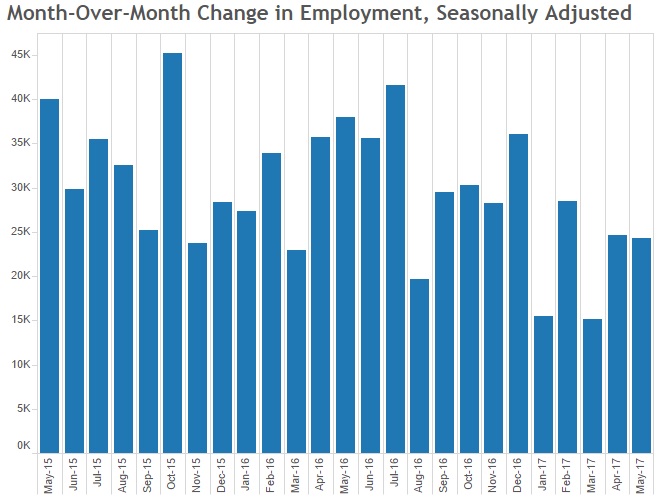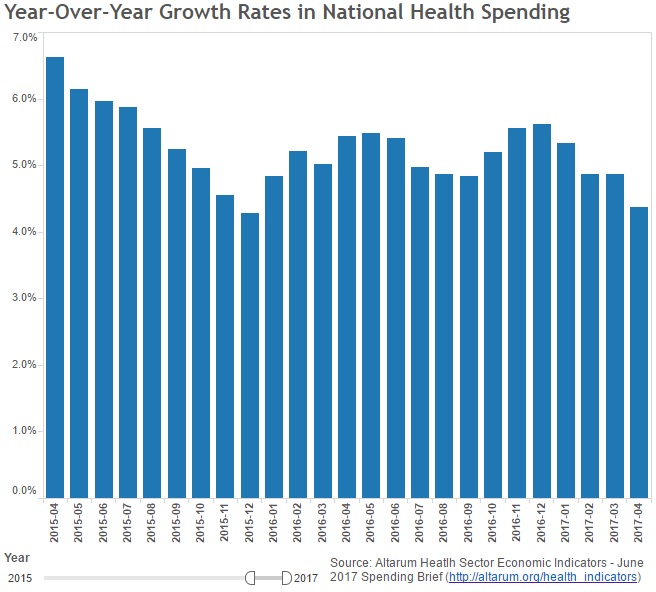Healthcare Prices, Spending, Employment Decline in Early 2017
Healthcare prices reached the lowest annual growth rate since June 2016 in the first four months of 2017, while healthcare spending and employment also dropped.

Source: Thinkstock
- Recent research from the Altarum Institute showed that healthcare prices, spending, and employment are all trending downward after a three-year period of healthcare spending acceleration.
Healthcare employment growth declined by 10,000 per month since 2016, while price increases stabilized across clinical areas and healthcare spending growth decreased by 0.5 percent in the same period.
“The leveling off in expanded coverage combined with the uncertain future of recent coverage gains are the likely contributors to the slowdown in health job growth in 2017,” stated Charles Roehrig, MD, Altarum’s Center for Sustainable Health Spending’s founding director. “It appears that the growth in health services utilization is also slowing. Health spending is on track for less than 5 percent growth in 2017, ending three consecutive years of greater than 5 percent growth.”
Healthcare prices dipped in early 2017. Overall, prices dropped 1.9 percent in April 2017 compared to March 2017 and rose just 1.6 percent compared to the previous year.
Healthcare prices in April 2017 represented the lowest annual growth rate since June 2016.

Source: Altarum Institute
The significant decline in healthcare prices stemmed from a large drop in prescription drug rates from 4.7 percent to 3.1 percent between 2016 and 2017. The historically low dental services price growth rate of 1.1 percent also contributed.
In contrast, hospital prices increased from 1.7 percent in March 2017 to 1.8 in April of the same year. Physician prices also rose from 0.4 percent to 0.5 percent in the same period.
Researchers attributed overall lower healthcare prices to reduced utilization and the potential Affordable Care Act repeal.
“Private surveys are showing reduced utilization growth, and we again stress the uncertainty facing the health sector economy as legislative activity to repeal and replace the Affordable Care Act crawls forward,” researchers wrote in an accompanying brief.
“The story may simply be that the secular increase in high-deductible insurance policies is increasing healthcare consumer shopping behavior,” they added.
Additionally, healthcare employment trends in 2017 showed that job growth remained consistent throughout the first five months of the year. The rate stabilized at two-thirds of the 2015 and 2016 growth rates.
Healthcare employment growth in the first half of 2017 averaged under 22,000 jobs per month, compared to 32,000 per month in the previous two years.

Source: Altarum Institute
The slowdown in healthcare employment occurred in both hospitals and ambulatory care settings, researchers added. Hospitals added 5,500 jobs per month in the first five months of 2017 versus 10,000 per month in 2016.
Ambulatory settings, such as physician offices, clinics, and home health agencies, experienced a similar trend. The facilities added 14,000 jobs per month in early 2017, representing a 6,000-jobs-per-month decline in the past year.
The recent healthcare employment deceleration revealed a consistent decline in job growth since its peak of 2.7 percent in October 2015. The job growth rate reached just 2.1 percent in May 2017.
Hospitals reported the greatest job growth slowdown from 2.9 percent in November 2015 to 1.9 percent in May 2017.
Ambulatory care settings also saw a 0.7 percentage point reduction in job growth between July 2015 and May 2017, reaching just 3 percent.
Despite healthcare job growth decreases, researchers found that the healthcare industry’s share of total employment reached a high of 10.75 percent.
Following recent healthcare prices and employment trends, researchers revealed that national healthcare spending slowed. By April 2017, healthcare spending reached the lowest growth rate in 16 months at 4.4 percent.
Early 2017 also represented a gradual decline in healthcare spending. The average growth rate for the first four months of the year was 4.9 percent.

Source: Altarum Institute
Hospital care accounted for the largest share of national healthcare spending with 32 percent of the budget, totaling $1.12 trillion in the first four months of 2017.
Although home health care saw the most rapid growth in early 2017 with a growth rate of 5.7 percent.
